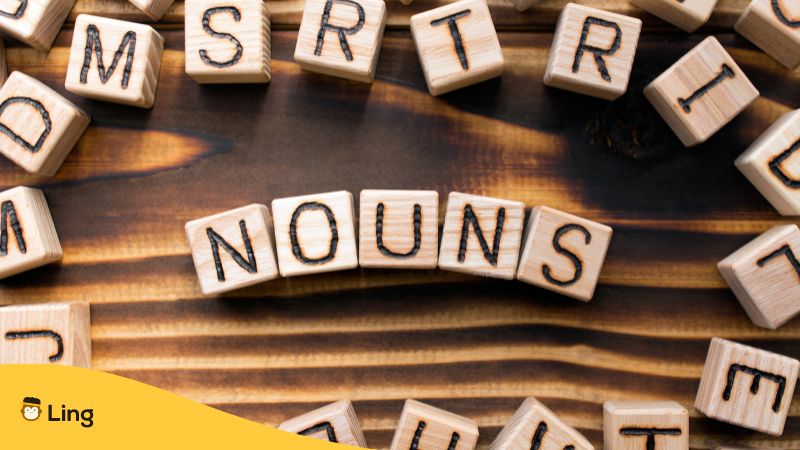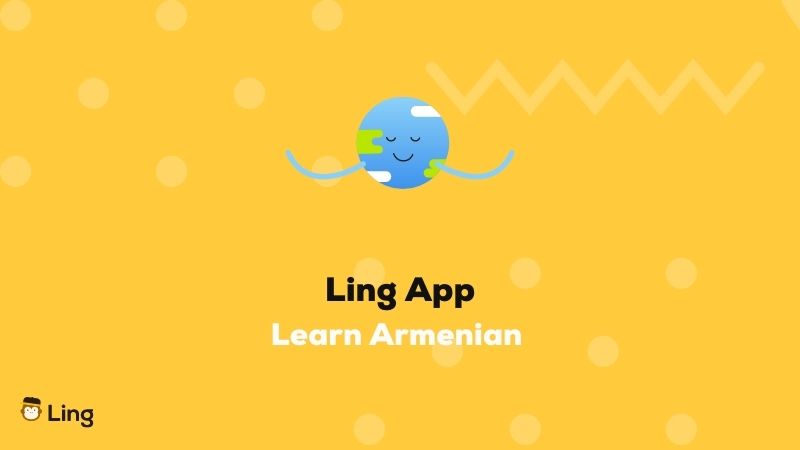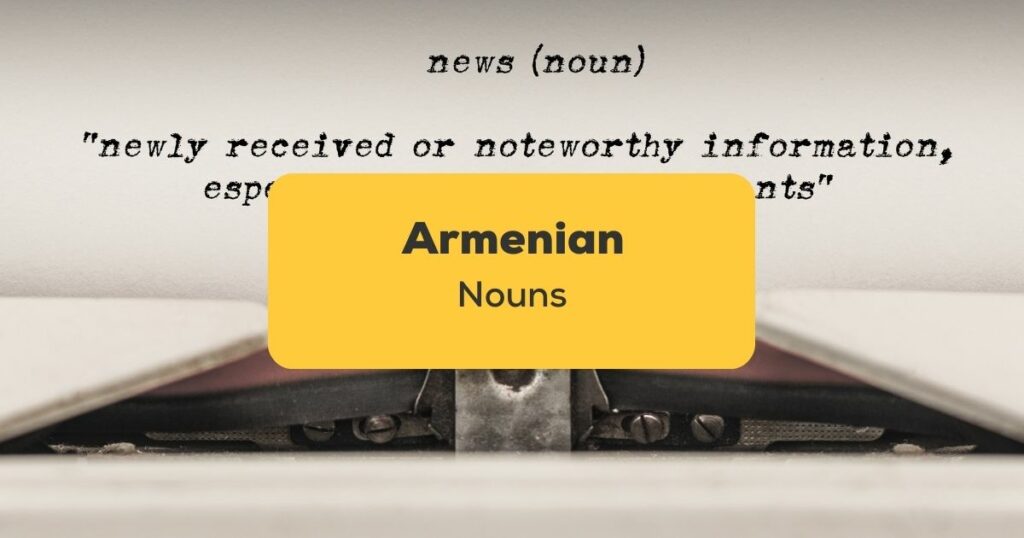Imagine the world of language as a map of a hidden treasure, with each noun representing a priceless diamond. Armenian nouns are similar to the vibrant beads that connect the tales of daily life, from grand mountains to busy marketplaces, from delectable dishes to people’s names and welcoming faces.
You are not only acquiring words as you dive into the world of Armenian nouns, you are also opening the doors to a vibrant culture, a rich history, and an entirely new mode of expression. So take out your linguistic magnifying glass, sign up for the noun-hunting adventure, and let’s all work together to piece together the tapestry of Armenian nouns, one wonderful word at a time.
Armenian Nouns Across Varieties
The usage of nouns in Armenian, a language with a long history and many cultural influences, varies noticeably from variety to variety. Let’s examine how nouns and negative verbs are used in Western, Eastern, and Modern Armenian.

1. Modern Armenian
Also known as Eastern Armenian, Modern Armenian is the type that is most often spoken today. Modern Armenian nouns are distinguished by their shortened grammatical and sound changes. Compared to classical Armenian, the present spoken form of the language features a more streamlined noun declension system with fewer noun cases. The noun declension system explains how nouns change forms based on number, gender and/ or grammatical case.
2. Classical Armenian
The noun declension system in classical Armenian is more complex and is mostly employed in historical and religious works. Nouns have different case inflections to represent their various grammatical functions in sentences. Classical Armenian is renowned for its exact and complex grammatical structure, which demonstrates the historical development and influences of other ancient languages on the entire language family.
3. Eastern Armenian
When compared to Western Armenian, the Eastern Armenian variety reveals some differences in noun forms and pronunciation. This variety includes the dialects of two modern languages spoken in Armenia, Iran, and parts of the Caucasus.
4. Western Armenian
Distinctive noun forms and pronunciations distinguish Western Armenian from Eastern Armenian, which is spoken by the Armenian diaspora, particularly in nations like Turkey, Lebanon, and the United States.

Understanding Armenian Nouns
Nouns are called “անուններ” (anunner) in Armenian. Armenian nouns have a unique and rich system of noun declensions, which determine the grammatical case, number, and gender of the noun within a sentence. Here’s an overview of the grammar rules for Armenian nouns:
- Number: Armenian nouns can be singular or plural. The plural form is usually formed by adding suffixes to the singular form. The suffixes can vary based on the declension.
- Gender: Armenian nouns are generally not marked for a person or gender. However, there are a few exceptions where gender distinctions are made, especially for certain professions or titles.
- Cases: Armenian nouns auxiliary verbs are declined into different cases, indicating their grammatical roles within sentences. There are seven cases in Armenian: Nominative, Genitive, Dative, Accusative, Ablative, Instrumental, and Locative.
- Nominative Case: This is the base form of the noun used for the subject of the sentence.
- Genitive Case: Used to indicate possession or relationship, often translated as “of” or “‘s” in English.
- Dative Case: Denotes the indirect object of a sentence, often translated as “to” or “for” in English.
- Accusative Case: Represents the direct object of a sentence, receiving the action of the verb.
- Ablative Case: Indicates motion away from or origin, often translated as “from” or “out of.”
- Instrumental Case: Shows the means or instrument by which an action is performed, translated as “by” or “with.”
- Locative Case: Used to indicate location, often translated as “in,” “on,” or “at.”
- Declensions: Armenian nouns follow various declension patterns based on their endings, many transformations that determine how they change in different cases. There are several declension classes, each with its own set of rules for forming the different cases.
- Definite and Indefinite Articles: Armenian does not have definite article (the) and indefinite (a/an) articles as in English. The noun’s context and declension often provide enough information to determine its role in a sentence.
- Vowel Harmony: Armenian nouns may undergo vowel harmony in some cases. It means that the word order of the vowels in the suffixes changes to match the vowels in the noun stem.
- Adjectives and Noun Agreement: Adjectives must agree with the noun they modify in case and number. The adjective endings change according to the noun’s declension.
Importance Of Armenian Nouns In the Armenian Language
For those attempting to master this fascinating language, Armenian nouns serve as the foundation for linguistic knowledge and effective communication. As students explore the world of Armenian nouns, they set off on a journey that is crucial for comprehending sentence construction, communicating abstract concepts, and developing a connection to the history, culture, and language family of Armenia.
As the fundamental units of sentences, nouns mold communication at its core. Learning their declensions, cases, and variations helps students negotiate Armenian grammar’s complexities and create sentences that accurately express their ideas. Additionally, learning how nouns vary in different contexts gives students the ability to precisely and sensitively describe relationships, possession, location, and action.
Learning Armenian nouns is essentially a trip into the heart of the language and the people it is meant to represent. The trip reveals the beauty of expression, the core of identity, and the wealth of culture that the Armenian language encompasses in addition to giving learners the tools for linguistic mastery.

Learn Armenian With Ling
Imagine having access to the rich history, language, and culture of Armenia at the tips of your fingers. The Ling app is your ticket to an amazing experience of acquiring Armenian, not just a language tool. You may overcome pronunciation difficulties, amass a wealth of vocabulary, and solve the mysteries of grammar with interactive lessons that make studying feel like fun.
The Ling app isn’t just about memorizing; it’s about experiencing Armenia through its official language. Imagine the joy of conversing with locals in their native tongue, sharing stories over a cup of Armenian coffee, and feeling a deeper connection to the rich history that surrounds you. From the Armenian alphabet to other Indo-European languages, the Ling app has all that you need.
With the Ling app, every learning moment is an exciting step towards becoming an Armenian language superstar! Try the app today by downloading it on your iOS device or Android device now!



































































